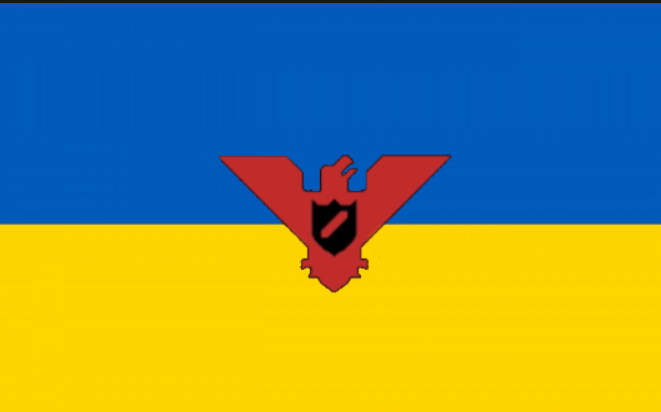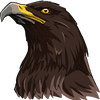| History: |
During the Great Revolutionary War, the Imperial Government of Arztozka, the central government of the nation, fell into disarray and revolt as different internal factions griped for control. Fearing the worst, and attempting to retain control, Emperor Xerxes VI initiated a purge of the politburo, carried out by the Supreme People's Council. The purge was aimed at silencing dissidents, allowing the government, specifically the Emperor, to reorganize the state and reappoint replacements, ensuring greater support from the people. This desperate attempt at power accomplished nothing but unifying several enemy factions, creating the United Front for the Socialist Advancement of Arztozka (UFSAA). Under the UFSAA, the Socialist Republic of Arztozka was declared, under Supreme Chancellor Perseus. A power struggle ensued, with both governments claiming to be the legitimate head of state.
Key to the success of either movement was the support of the armed forces. Field Marshall Tullius, the de facto head of the army, along with the rest of High Command, favored retaining its support to the Emperor, despite the withering casualties it had suffered in the recent Second Kolechian War. This was offset by the younger officers, many of whom supported the UFSAA. The situation came to a head after the Paradizna Riots, a period of violent popular uprisings. After several weeks, the Emperor deployed the 3rd, 22nd, and 31st Infantry Regiments. 2,768 civilians were killed in the resulting crackdowns. Following the intervention, the military suffered its own split. Loyalists and Revolutionaries clashed, with the air force in particular overwhelmingly supporting the SRA. After an internal civil war lasting eight months, leading to 87,000 casualties, and the death of Field Marshall Tullius, the Revolutionaries seized control. The Imperial Forces were dissolved, and the Socialist Armed Forces (SAF) took their place. A general purge followed.
Leaders in the military aligned themselves with the UFSAA, and the latter, with no opposition, took control of the country. Emperor Xerxes VI fled the nation, and the Imperial Government was dissolved. It was at this time, just after the Socialist State was established, and the nation was at its weakest, that external enemies emerged. A coalition comprised of Kolechia, Antegria, Obristan, and the United Federation declared war, attempting to reinstate the emperor.
With 2.5 million soldiers, the bloc launched the largest ground invasion in the nation's history. With the military in disarray from recent purges and a lack of training, the forces advanced rapidly through the country, capturing or killing almost 80% of SAF forces. An emergency military junta took control under Supreme Chancellor Perseus and Air Marshall Aleksandr Borshikov. Immediately, SAF Supreme Command began massing its forces near the Duba Delta. It was here, just 50 km from the capital of Paradizna, with enemy forces closing in, that the Arztozkan army inflicted its greatest defeat on the enemy.
On the 13 of May, enemy forces clashed near the exterior town of Vladvidostok. The 1st, 2nd, and 7th SAF Armies, under the relatively inexperienced Lieutenant General Chouinard, consisting of 540,000 soldiers, mainly hastily drafted conscripts, faced off against 650,000 soldiers under Army Group A, commanded by Major General Baryshnikov of Obristan. Each side also wielded artillery and tanks totaling 1500 guns and 2300 motorized vehicles. The field of battle, set in the coastal plains of the Duba Delta, with the coast to the west, thick forests to the east, and the capital to the south, was advantageous to the SAF. Rather than take an additional three days to travel down the AR-116 highway, Baryshnikov chose to march through the delta on a direct route to the capital, with the intent to deliver an intense blow and knockout the Arztozkan capital. Playing right into the SAF's hands. With knowledge of the enemy's movements, General Chouinard maneuvered his forces appropriately, laying defenses and preparing for battle.
The battle opened at 0900. Units from both armies encountered each other outside of Vladvidostok and began to skirmish through the town itself. Civilians were forced to desperately flee as an intense shelling of the city began. With more than double the amount of men and firepower, the SAF forces were forced to retreat back to a defensive line. At 1800, the last Arztozkan units pulled out, leaving the city under Coalition control. General Chouinard was quick to react, and, with the forward deployment of the III Corps, strengthened his left with an additional 90,000 men. By the beginning of day two, 150,000 men stretched for miles through the boggy front line. Taking the initiative, Baryshnikov hit the Arztozkan flanks, coming close to breaking through the unorganized, underdefended right. The battle was only saved by the arrival of Arztozkan Air Forces (AAF) and motorized units, who, together, launched a successful counterattack, beating back the Coalition forces. The AAF in particular played an important role, gaining air supremacy over the battlefield, and unleashing hell on supply lines and troop positions. After a day of turbulent, inconclusive fighting, night fell on the second day of the battle. Overnight, more and more SAF troops poured in as Chouinard, anticipating a massive central assault, committed everything he had. Finally, with all 540,000 troops deployed to the front lines, the SAF outnumbered the Coalition forces by a slim margin, who were still holding back their reserves. As the third day of battle began, it became apparent that Chouinard had correctly guessed Baryshnikov's strategy. At 1100, after hours of intense shelling, Army Group A launched a central assault. With the Arztozkan's readiness, however, the Coalition was decimated. Suffering horrendous casualties and the supply chains severed, Baryshnikov gave the order to retreat. As they went, they were continuously harassed by SAF and AAF forces. Army Group A had suffered nearly 250,000 casualties during the campaign, and with the immediate area around the capital firmly in Arztozkan hands, the opportunity to deal a decisive knockout blow to the SRA was forever lost. General Baryshnikov was demoted and later dishonorably discharged for his part in the disaster; his opponent, General Chouinard, was promoted to Major General. The result of the battle was that the Coalition would never again mount a serious campaign. After another three months, the war officially came to an end with the Treaty of Paradizna.
As the war slowly started to close, the military began to viciously purge any remaining dissidents to the newly recognized SRA, and established a military dictatorship, with Perseus at its head. The members of the old politburo and People's Council were discarded, and a newly selected group of representatives formed the Supreme Socialist Council. The latter provided credibility to the new government, and allowed the people a voice, albeit small, in the ruling of the nation.
Under the new government, sweeping changes were made, converting the nation into an industrial, socialist-led economy, and sculpting the nation into a regional giant. Despite all the seeming changes, however, many privately felt that the new government was the same, if not worse than Imperial Arztozka had been. The nation over the next two decades became an ultranationalist, militaristic hellhole. Conscription into the military was mandatory, poverty and corruption were widespread, entire communities were razed without warning, and the government brutally repressed anyone who spoke out. During this period, known as the "Red Scare," an estimated 100,000-120,000 Arztozkan citizens were killed, with an additional 1,000,000 detained. The Socialist Republic gave little heed to human rights or feelings, consistently being ranked as the worst nation to live in. Despite its promising start, the military-established regime had corrupted itself into a state with a military inseparable from politics, greedily pursuing its own ambitions instead of having the interest of the people in mind.
This was true for the better part of 30 years. In the last decade of its existence, the SRA became increasingly aggressive, both domestically and to its neighbors, leading many to fear that another large war was coming to the continent. That was, until, on Christmas Day, 1998, Supreme Chancellor Perseus was killed in a plane crash over the Vysokiye Gory mountains. Tampering was suspected, and 87 Kolechian immigrants were detained in connection to the accident. The day after his death, Perseus' son, Perseus II, a member of the politburo, was sworn into the position of Supreme Chancellor, greatly boosted by his father's reputation. Many in the nation prepared for crackdowns, and the continent waited to see what would happen. Would Perseus be like his father, the great oppressor, or the great reformer? Time would tell. |
| History: |
The Socialist Armed Forces (SAF) were formed in 1969, from the remnants of the Imperial Military. The latter is remembered for it's role in the Revolutionary War, in which it committed several massacres against civilian populations, and it's fanatic support for Emperor Xerxes VI within the upper ranks. The Imperials disintegrated after the Great Schism, with the Revolutionaries taking control of the armed forces. Shortly afterwards, the Socialist Armed Forces were formed, spearheaded by Air Marshall Aleksandr Borshikov.
During the Great War, the SAF played the most crucial part in the defense of the motherland. Despite suffering devastating losses in the opening months of the war, the SAF stood it's ground at Duba, stopping an enemy advance dead in its tracks and even pushing back. After three months of counter fighting, the enemy sued for peace, and the war ended. Not, however, before the SAF and formed militias had suffered combined 800,000 casualties, many of them POWs. This brings the total casualties the SAF and former Imperials suffered to over 2,000,000.
After the wars end, the temporary military junta was continued as the SAF began to purge the nation of any dissidents. It then began to integrate itself into the Socialist Republic of Arztozka's (SRA) government, making them inseparable. The next thirty years saw the military reform the nation, forcing it to become an industrial giant, whilst continuing to repress anyone who didn't support them. An estimated 100,000 civilians were killed, and another million were arrested.
The military itself during this time period swelled to its largest extent ever, with a quarter of the population conscripted and the nation's factories producing tanks and planes at an astonishing rate. A new branch was formed, the Arztozkan Navy (AN), under Admiral Haefner, which saw the maritime fleet swell from 0 ships to over 200, with most of them unmatched in the region. The Arztozkan Air Forces (AAF) in particular saw massive growth as well.
Also during this time period, with the military budget and size ballooning, and hyper nationalism rampart in the government, the SRA began to threaten its neighbors. With this newfound aggressiveness, many on the continent feared another war was coming, this time with Arztozka as the aggressors. This fear was largely quelled by the end of the 1990s, however, with the death of Supreme Chancellor Perseus I.
The Socialist Armed Forces today are drastically different from their peak in the reign of Perseus I. With the new government favoring a more pacifist approach, troop numbers have dwindled down to almost none. The tank force, while still formidable at 9,500 units, is significantly smaller than it was. The Navy constructed under Admiral Haefner is defunct, with the nation returning to 0 combat mercantile ships. The Air Forces, however, have continued the legacy Air Marshall Borshikov imparted decades ago. Money is funneled into the AAF, and the air fleet stands at 1,410 aircraft, a 27% advantage over it's neighbors. All of this is offset, however, by a program many say counteracts the steps towards peace. On 11 April, 2022, the Socialist Nuclear Development Program (SNDP) successfully detonated a nuclear weapon. This action has been widely criticized, but development continues.
While the SAF currently are on a downward trend, with even their governmental control dwindling, only time will tell the future of the Socialist Armed Forces of the Socialist Republic of Arztozka. |



















